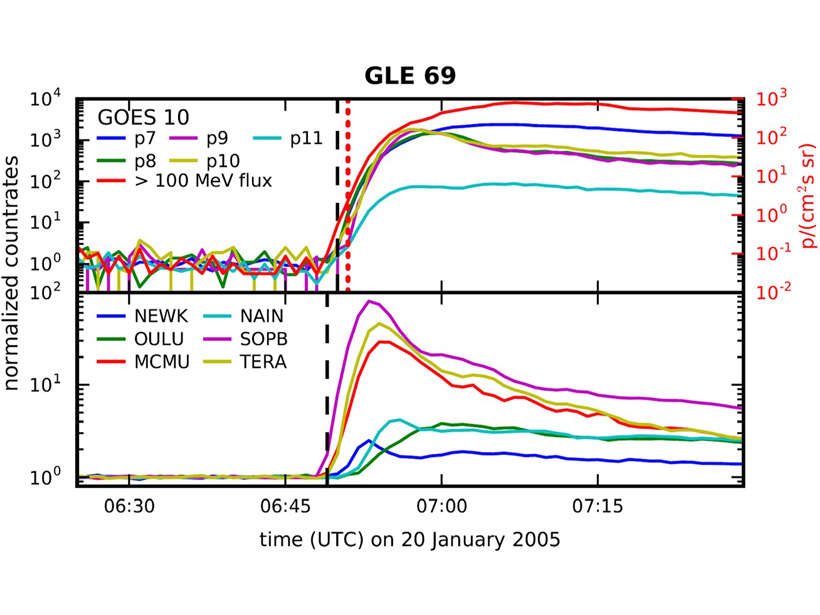Source: Space Weather
Solar radiation storms enhance radiation levels in Earth’s atmosphere. There is growing interest in detection of these events because of the recognition that enhanced atmospheric radiation is a significant risk to civil aviation (it can disrupt avionic control systems, and also deliver human radiation doses that may require post-event assessment and advice by medical experts). He and Rodriguez [2018] compare two very different methods for detection of these storms. One is the use of ground-based measurements to detect the enhanced fluxes of atmospheric neutrons produced during such events; the other is use of space-based sensors to detect the enhanced fluxes of solar energetic particles that cause such events (those particles must have sufficient energy (>400 MeV) to penetrate deep to Earth’s atmosphere and generate atmospheric neutrons). The authors show that, when carefully analyzed, the two techniques are evenly matched in terms of the speed with which they can detect these events. Thus they suggest that the development of future monitoring systems should consider both techniques, perhaps combining the two so as to exploit their different strengths.
Citation: He, J. & Rodriguez, J. V. [2018]. Onsets of solar proton events in satellite and ground level observations: A comparison. Space Weather, 16. https://doi.org/10.1002/2017SW001743
—Michael Hapgood, Editor, Space Weather
Text © 2018. The authors. CC BY-NC-ND 3.0
Except where otherwise noted, images are subject to copyright. Any reuse without express permission from the copyright owner is prohibited.

